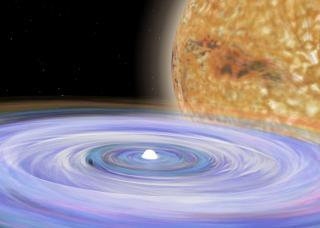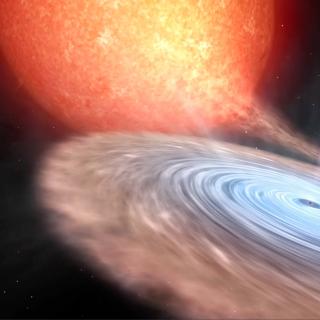Bibcode
Mullaney, J. R.; Makrygianni, L.; Dhillon, V.; Littlefair, S.; Ackley, K.; Dyer, M.; Lyman, J.; Ulaczyk, K.; Cutter, R.; Mong, Y. -L.; Steeghs, D.; Galloway, D. K.; O'Brien, P.; Ramsay, G.; Poshyachinda, S.; Kotak, R.; Nuttall, L.; Pallé, E.; Pollacco, D.; Thrane, E.; Aukkaravittayapun, S.; Awiphan, S.; Breton, R.; Burhanudin, U.; Chote, P.; Chrimes, A.; Daw, E.; Duffy, C.; Eyles-Ferris, R.; Gompertz, B.; Heikkilä, T.; Irawati, P.; Kennedy, M.; Killestein, T.; Levan, A.; Marsh, T.; Mata-Sanchez, D.; Mattila, S.; Maund, J.; McCormac, J.; Mkrtichian, D.; Rol, E.; Sawangwit, U.; Stanway, E.; Starling, R.; Tooke, S.; Wiersema, K.
Referencia bibliográfica
Publications of the Astronomical Society of Australia
Fecha de publicación:
1
2021
Número de citas
4
Número de citas referidas
3
Descripción
The past few decades have seen the burgeoning of wide-field, high-cadence surveys, the most formidable of which will be the Legacy Survey of Space and Time (LSST) to be conducted by the Vera C. Rubin Observatory. So new is the field of systematic time-domain survey astronomy; however, that major scientific insights will continue to be obtained using smaller, more flexible systems than the LSST. One such example is the Gravitational-wave Optical Transient Observer (GOTO) whose primary science objective is the optical follow-up of gravitational wave events. The amount and rate of data production by GOTO and other wide-area, high-cadence surveys presents a significant challenge to data processing pipelines which need to operate in near-real time to fully exploit the time domain. In this study, we adapt the Rubin Observatory LSST Science Pipelines to process GOTO data, thereby exploring the feasibility of using this `off-the-shelf' pipeline to process data from other wide-area, high-cadence surveys. In this paper, we describe how we use the LSST Science Pipelines to process raw GOTO frames to ultimately produce calibrated coadded images and photometric source catalogues. After comparing the measured astrometry and photometry to those of matched sources from PanSTARRS DR1, we find that measured source positions are typically accurate to subpixel levels, and that measured L-band photometries are accurate to $∼50$ mmag at $m_L∼16$ and $∼200$ mmag at $m_L∼18$. These values compare favourably to those obtained using GOTO's primary, in-house pipeline, GOTOPHOTO, in spite of both pipelines having undergone further development and improvement beyond the implementations used in this study. Finally, we release a generic `obs package' that others can build upon, should they wish to use the LSST Science Pipelines to process data from other facilities.
Proyectos relacionados

Estrellas Binarias
El estudio de las estrellas binarias es una parte esencial de la astrofísica estelar. Una gran parte de las estrellas de nuestra Galaxia y de otras galaxias se ha formado en sistemas binarios o múltiples, por lo que entender la estructura y evolución de estos sistemas es importante desde el punto de vista estelar y galáctico. Un aspecto en el que
Pablo
Rodríguez Gil

Agujeros negros, estrellas de neutrones, enanas blancas y su entorno local
Los agujeros negros y estrellas de neutrones en binarias de rayos-X son laboratorios únicos para explorar la física de estos objetos compactos. No solo permiten confirmar la existencia de agujeros negros de origen estelar a través de mediciones dinámicas de sus masas, sino que también permiten investigar el comportamiento de la materia y la
Montserrat
Armas Padilla

Exoplanetas y Astrobiología
La búsqueda de vida en el Universo se ha visto impulsada por los recientes descubrimientos de planetas alrededor de otras estrellas (los llamados exoplanetas), convirtiéndose en uno de los campos más activos dentro de la Astrofísica moderna. En los últimos años los descubrimientos cada vez más numerosos de nuevos exoplanetas y los últimos avances
Enric
Pallé Bago